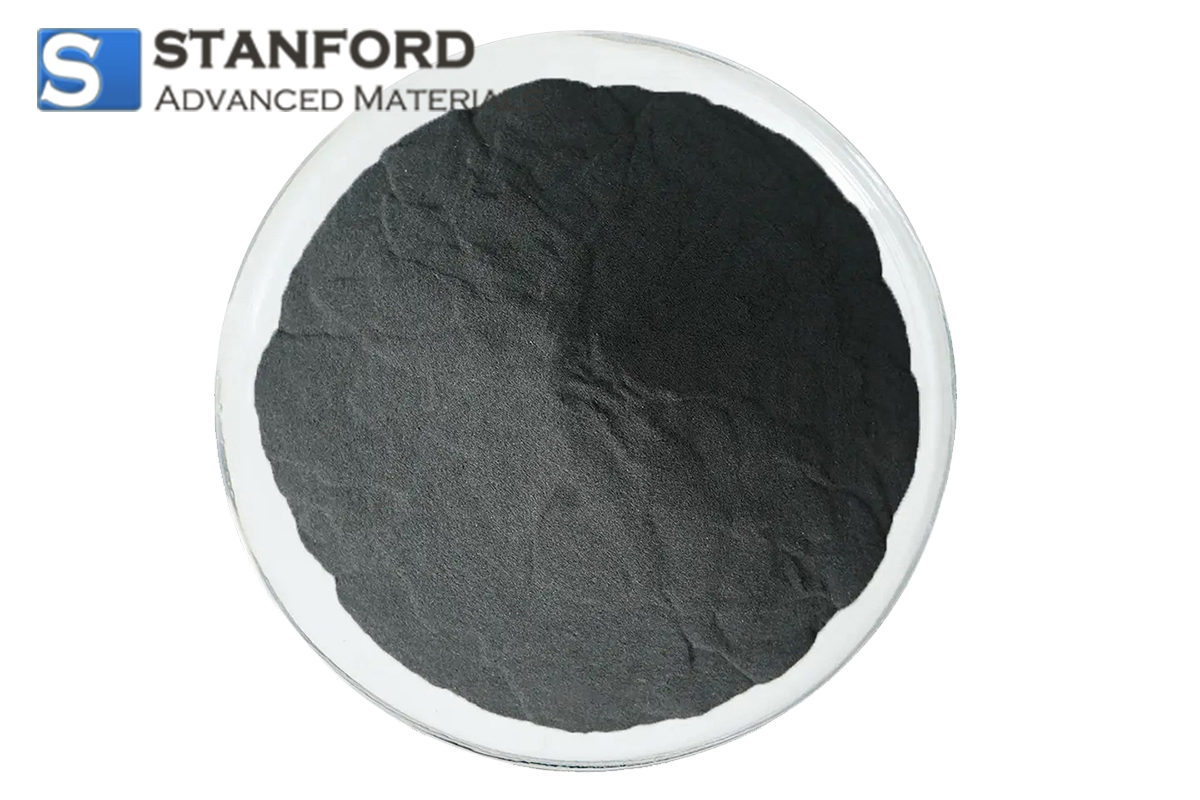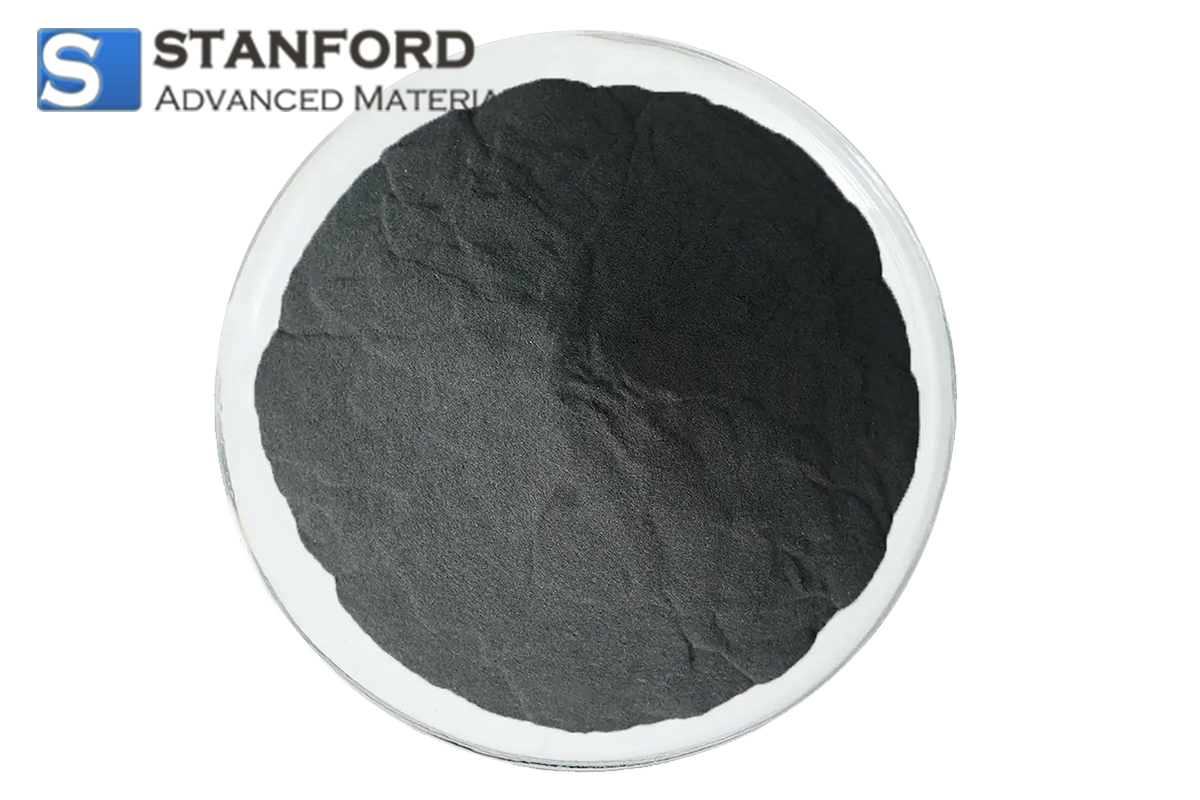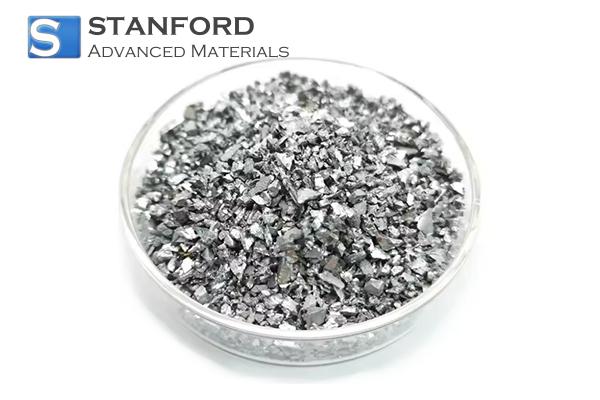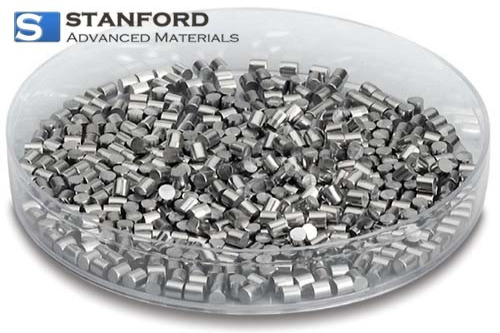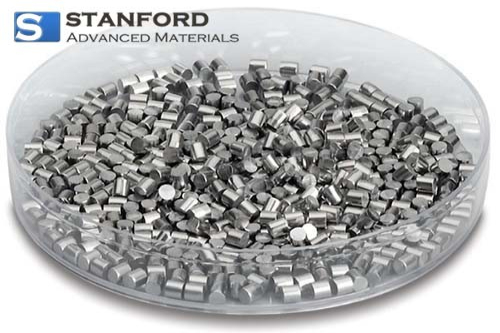SECTION 1. IDENTIFICATION
Product Name: Chromium(III) Acetate Hydroxide
CAS #: 39430-51-8
Relevant identified uses of the substance: Scientific research and development
Supplier details:
Stanford Advanced Materials
E-mail: sales@samaterials.com
Tel: (949) 407-8904
Address: 23661 Birtcher Dr., Lake Forest, CA 92630 U.S.A.
SECTION 2. HAZARDS IDENTIFICATION
Classification of the substance or mixture
GHS Classification in accordance with 29 CFR 1910 (OSHA HCS)
Skin sensitization (Category 1), H317
GHS Label elements, including precautionary statements
Pictogram
Signal word Warning
Hazard statement(s)
H317 May cause an allergic skin reaction.
Precautionary statement(s)
P261 Avoid breathing dust/ fume/ gas/ mist/ vapors/ spray.
P272 Contaminated work clothing should not be allowed out of the
workplace.
P280 Wear protective gloves.
P302 + P352 IF ON SKIN: Wash with plenty of soap and water.
P333 + P313 If skin irritation or rash occurs: Get medical advice/ attention.
P363 Wash contaminated clothing before reuse.P501 Dispose of contents/ container to an approved waste disposal
plant.
Hazards not otherwise classified (HNOC) or not covered by GHS - none
SECTION 3. COMPOSITION/INFORMATION ON INGREDIENTS
Substances
Formula : C14H23Cr3O16
Molecular weight : 603.31 g/mol
CAS-No. : 39430-51-8
EC-No. : 254-447-3
SECTION 4. FIRST AID MEASURES
Description of first-aid measures
General advice
Consult a physician. Show this material safety data sheet to the doctor in attendance.
If inhaled
If breathed in, move person into fresh air. If not breathing, give artificial respiration.
Consult a physician.
In case of skin contact
Wash off with soap and plenty of water. Consult a physician.
In case of eye contact
Flush eyes with water as a precaution.
If swallowed
Never give anything by mouth to an unconscious person. Rinse mouth with water. Consult
a physician.
Most important symptoms and effects, both acute and delayed
The most important known symptoms and effects are described in the labelling (see section
2) and/or in section 11
Indication of any immediate medical attention and special treatment needed
No data available
SECTION 5. FIREFIGHTING MEASURES
Extinguishing media
Suitable extinguishing media
Use water spray, alcohol-resistant foam, dry chemical or carbon dioxide.
Special hazards arising from the substance or mixture
Carbon oxides
Chromium oxides
Advice for firefighters
Wear self-contained breathing apparatus for firefighting if necessary.
Further information
No data available
SECTION 6. ACCIDENTAL RELEASE MEASURES
Personal precautions, protective equipment and emergency procedures
Use personal protective equipment. Avoid dust formation. Avoid breathing vapors, mist or
gas. Ensure adequate ventilation. Avoid breathing dust.
For personal protection see section 8.
Environmental precautions
Do not let product enter drains.
Methods and materials for containment and cleaning up
Pick up and arrange disposal without creating dust. Sweep up and shovel. Keep in
suitable, closed containers for disposal.
Reference to other sections
For disposal see section 13.
SECTION 7. HANDLING AND STORAGE
Precautions for safe handling
Advice on safe handling
Avoid contact with skin and eyes. Avoid formation of dust and aerosols.Advice on safe
handling
Further processing of solid materials may result in the formation of combustible dusts. The
potential for combustible dust formation should be taken into consideration before
additional processing occurs.
Advice on protection against fire and explosion
Provide appropriate exhaust ventilation at places where dust is formed.
Hygiene measures
Handle in accordance with good industrial hygiene and safety practice. Wash hands before
breaks and at the end of workday.
For precautions see section 2.
Conditions for safe storage, including any incompatibilities
Storage conditions
Keep container tightly closed in a dry and well-ventilated place.
Keep in a dry place.
Storage class (TRGS 510): 13: Non Combustible Solids
Specific end use(s)
Apart from the uses mentioned in section 1 no other specific uses are stipulated
SECTION 8. EXPOSURE CONTROLS/PERSONAL PROTECTION
Control parameters
Ingredients with workplace control parameters
Contains no substances with occupational exposure limit values.
Exposure controls
Appropriate engineering controls
Handle in accordance with good industrial hygiene and safety practice. Wash hands
before breaks and at the end of workday.
Personal protective equipment
Eye/face protection
Face shield and safety glasses Use equipment for eye protection tested and
approved under appropriate government standards such as NIOSH (US) or EN
166(EU).
Skin protectionHandle with gloves. Gloves must be inspected prior to use. Use proper glove
removal technique (without touching glove's outer surface) to avoid skin contact
with this product. Dispose of contaminated gloves after use in accordance with
applicable laws and good laboratory practices. Wash and dry hands.
Body Protection
Complete suit protecting against chemicals, The type of protective equipment must
be selected according to the concentration and amount of the dangerous substance
at the specific workplace.
Respiratory protection
For nuisance exposures use type P95 (US) or type P1 (EU EN 143) particle
respirator.For higher level protection use type OV/AG/P99 (US) or type ABEK-P2 (EU
EN 143) respirator cartridges. Use respirators and components tested and approved
under appropriate government standards such as NIOSH (US) or CEN (EU).
Control of environmental exposure
Do not let product enter drains.
SECTION 9. PHYSICAL AND CHEMICAL PROPERTIES
Information on basic physical and chemical properties
a) Appearance Form: powder
Color: green
b) Odor No data available
c) Odor Threshold No data available
d) pH No data available
e) Melting point/freezing point
> 400 °C (> 752 °F) at ca.1,013 hPa - OECD Test Guideline 102
f) Initial boiling point and boiling range
No data available
g) Flash point ()No data available
h) Evaporation rate No data available
i) Flammability (solid, gas)
not auto-flammable - Flammability (solids)
j) Upper/lower flammability or explosive limits
No data available
k) Vapor pressure No data available
l) Vapor density No data available
m) Relative density 0.91
n) Water solubility 675 g/l at 20 °C (68 °F) - OECD Test Guideline 105
o) Partition coefficient: n-octanol/water
log Pow: 0.2 at 22 °C (72 °F)
p) Autoignition temperature
No data available
q) Decomposition temperature
No data available
r) Viscosity No data available
s) Explosive properties No data available
t) Oxidizing properties No data available
Other safety information
No data available
SECTION 10. STABILITY AND REACTIVITY
Reactivity
No data available
Chemical stability
Stable under recommended storage conditions.
Possibility of hazardous reactions
No data available
Conditions to avoid
No data available
Incompatible materials
Strong oxidizing agents
Hazardous decomposition products
In the event of fire: see section 5
SECTION 11. TOXICOLOGICAL INFORMATION
Information on toxicological effects
Acute toxicity
LD50 Oral - Rat - female - > 5,000 mg/kg
(OECD Test Guideline 423)
Inhalation: No data available
LD50 Dermal - Rat - male and female - > 2,000 mg/kg
(OECD Test Guideline 402)
No data available
Skin corrosion/irritation
No data available
Serious eye damage/eye irritation
No data available
Respiratory or skin sensitization
in vivo assay - Mouse
Result: May cause sensitization by skin contact.
(OECD Test Guideline 429)
Germ cell mutagenicity
Ames test
S. typhimurium
Result: negative
Carcinogenicity
IARC: No ingredient of this product present at levels greater than or equal to 0.1% is
identified as probable, possible or confirmed human carcinogen by IARC.
No ingredient of this product present at levels greater than or equal to 0.1% is
identified as probable, possible or confirmed human carcinogen by IARC.
ACGIH: No ingredient of this product present at levels greater than or equal to 0.1% is
identified as a carcinogen or potential carcinogen by ACGIH.
NTP: No ingredient of this product present at levels greater than or equal to 0.1% is
identified as a known or anticipated carcinogen by NTP.
No ingredient of this product present at levels greater than or equal to 0.1% is
identified as a known or anticipated carcinogen by NTP.
OSHA: No component of this product present at levels greater than or equal to 0.1% is
on OSHA’s list of regulated carcinogens.
No component of this product present at levels greater than or equal to 0.1% is
on OSHA’s list of regulated carcinogens.
Reproductive toxicityNo data available
No data available
Specific target organ toxicity - single exposure
No data available
Specific target organ toxicity - repeated exposure
No data available
Aspiration hazard
No data available
SECTION 12. ECOLOGICAL INFORMATION
Toxicity
Toxicity to fish semi-static test LC50 - Danio rerio (zebra fish) - > 100 mg/l - 96 h
(OECD Test Guideline 203)
Toxicity to daphnia and other aquatic invertebrates
static test EC50 - Daphnia magna (Water flea) - > 100 mg/l - 48 h
(OECD Test Guideline 202)
Persistence and degradability
Biodegradability aerobic - Exposure time 9 d
Result: 91.8 % - Readily biodegradable.
(OECD Test Guideline 301A)
Bioaccumulative potential
No data available
Mobility in soil
No data available
Results of PBT and vPvB assessment
PBT/vPvB assessment not available as chemical safety assessment not required/not
conducted
Other adverse effects
No data available
SECTION 13. DISPOSAL CONSIDERATIONS
Waste treatment methods
Product
Offer surplus and non-recyclable solutions to a licensed disposal company.
Contaminated packaging
Dispose of as unused product.
SECTION 14. TRANSPORT INFORMATION
DOT (US)
Not dangerous goods
IMDG
Not dangerous goods
IATA
Not dangerous goods
Further information
Not classified as dangerous in the meaning of transport regulations.
SECTION 15. REGULATORY INFORMATION
SARA 302 Components
No chemicals in this material are subject to the reporting requirements of SARA Title III,
Section 302.
SARA 313 Components
This material does not contain any chemical components with known CAS numbers that
exceed the threshold (De Minimis) reporting levels established by SARA Title III, Section
313.
Massachusetts Right To Know Components
No components are subject to the Massachusetts Right to Know Act.
Pennsylvania Right To Know Components
Chromium(III) acetate hydroxide CAS-No.
39430-51-8
Revision Date
2015-07-08
California Prop. 65 Components
This product does not contain any chemicals known to the State of California to cause
cancer, birth, or any other reproductive defects.
This product does not contain any chemicals known to the State of California to cause
cancer, birth, or any other reproductive defects.
SECTION 16. OTHER INFORMATION
Safety Data Sheet according to Regulation (EC) No. 1907/2006 (REACH). The above information is
believed to be correct but does not purport to be all inclusive and shall be used only as a guide. The
information in this document is based on the present state of our knowledge and is applicable to the
product with regard to appropriate safety precautions. It does not represent any guarantee of the
properties of the product.


 English
English Española
Española Deutsch
Deutsch Français
Français Italiano
Italiano

